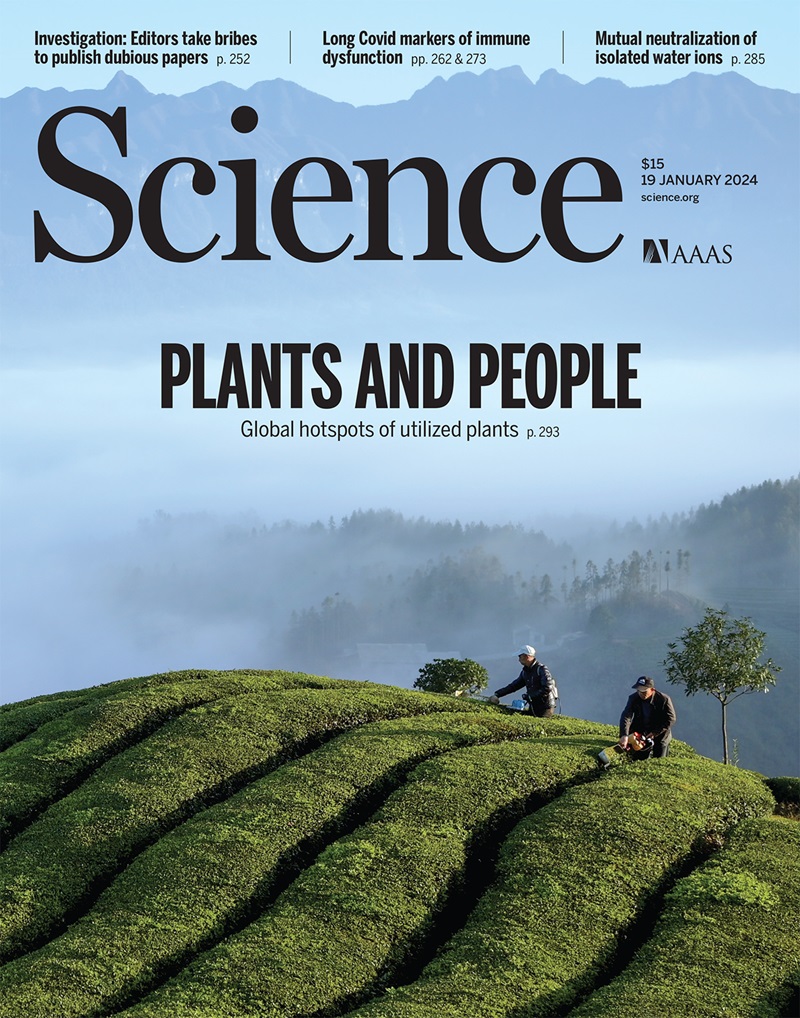星形胶质细胞,隐藏的大脑傀儡主人
IF 44.7
1区 综合性期刊
Q1 MULTIDISCIPLINARY SCIENCES
Science
Pub Date : 2025-05-15
引用次数: 0
摘要
人们普遍认为,神经调节剂如去甲肾上腺素和多巴胺结合并激活神经元上的受体,从而影响神经元回路的活动和突触连接的可塑性(强度或布线模式的变化),从而塑造生物体的行为。与经典的神经递质(如谷氨酸)不同,神经调节剂通常介导快速的点对点突触通信,神经调节剂在神经组织中广泛扩散,以调节神经元信号的强度、持续时间和可塑性。新出现的证据暗示星形胶质细胞——传统上被认为是被动的支持细胞——在神经调节中起着积极的作用(1-3)。然而,星形胶质细胞是否是神经调节的必要中介或代表神经元行为的调节辅助尚不清楚。在本期的第763、769和776页,Guttenplan等人(4)、Chen等人(5)和Lefton等人(6)分别报道了星形胶质细胞在不同神经回路、行为环境和物种的神经调节信号中是不可或缺的,从而解决了这些知识空白。本文章由计算机程序翻译,如有差异,请以英文原文为准。
Astrocytes, hidden puppet masters of the brain
It is accepted that neuromodulators such as norepinephrine and dopamine bind to and activate receptors on neurons to influence the activity of neuronal circuits and plasticity (changes in strength or wiring patterns) of synaptic connections, thus shaping the behavior of the organism. Unlike classical neurotransmitters (e.g., glutamate), which typically mediate fast, point-to-point synaptic communication, neuromodulators diffuse broadly through neural tissue to regulate the strength, duration, and plasticity of neuronal signaling. Emerging evidence now implicates astrocytes—traditionally seen as passive support cells—as active players in neuromodulation (1–3). However, whether astrocytes are necessary intermediaries in neuromodulation or represent regulatory adjuncts to neuronal actions is unclear. On pages 763, 769, and 776 of this issue, Guttenplan et al. (4), Chen et al. (5), and Lefton et al. (6), respectively, address these gaps in knowledge by reporting that astrocytes are indispensable for neuromodulatory signaling across diverse neural circuits, behavioral contexts, and species.
求助全文
通过发布文献求助,成功后即可免费获取论文全文。
去求助
来源期刊

Science
综合性期刊-综合性期刊
CiteScore
61.10
自引率
0.90%
发文量
0
审稿时长
2.1 months
期刊介绍:
Science is a leading outlet for scientific news, commentary, and cutting-edge research. Through its print and online incarnations, Science reaches an estimated worldwide readership of more than one million. Science’s authorship is global too, and its articles consistently rank among the world's most cited research.
Science serves as a forum for discussion of important issues related to the advancement of science by publishing material on which a consensus has been reached as well as including the presentation of minority or conflicting points of view. Accordingly, all articles published in Science—including editorials, news and comment, and book reviews—are signed and reflect the individual views of the authors and not official points of view adopted by AAAS or the institutions with which the authors are affiliated.
Science seeks to publish those papers that are most influential in their fields or across fields and that will significantly advance scientific understanding. Selected papers should present novel and broadly important data, syntheses, or concepts. They should merit recognition by the wider scientific community and general public provided by publication in Science, beyond that provided by specialty journals. Science welcomes submissions from all fields of science and from any source. The editors are committed to the prompt evaluation and publication of submitted papers while upholding high standards that support reproducibility of published research. Science is published weekly; selected papers are published online ahead of print.
 求助内容:
求助内容: 应助结果提醒方式:
应助结果提醒方式:


